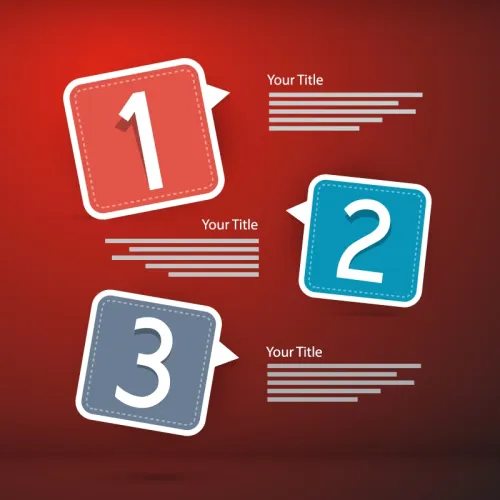Can You Code These 3 E/M Scenarios?

Read the documentation and select a code before you read our solution.
If you’re a primary care practice—or even a surgical office—chances are strong that E/M services make up a significant portion of your income. But every time Medicare or the RACs audit E/M codes, they inevitably find massive errors that stem from both undercoding and overcoding.
To ensure that you are coding your E/M services appropriately, we’ve put together three quick E/M documentation examples. Read through the clinician’s notes, and then determine which E/M code you would assign to the service.
Example 1: Hospital Visit for Chest Pain
The 73-year-old female patient is admitted to the hospital with a complaint of retrosternal left-sided chest pain, which started that morning. She has a history of hypertension, type two diabetes, non-ischemic cardiomyopathy, paroxysmal atrial fibrillation, gastroesophageal reflux disease, gastric polyp, irritable bowel syndrome, diverticulosis, glaucoma and recurrent bronchitis. She had a hemorrhoidectomy previously. Last angiogram was 61 days ago and that did not show any obstructive coronary artery disease. She woke this morning with sharp retrosternal chest pain, with the pain at seven out of ten, radiating to the left shoulder. There was associated shortness of breath and nausea but no dizziness. There are no aggravating factors at this time.
The patient’s current medication list is attached hereto. She has no allergies and does not smoke, drink alcohol or use recreational drugs. She lives with her husband. The patient’s mother died of breast cancer and her father died of lung cancer. Her four children are all alive and healthy. She has no siblings.
Review of systems is documented for all systems. Physical exam reveals that the patient is in no significant distress, and discusses her vital signs and saturations. It also discusses her HEENT, neck chest, heart abdomen, extremities, neurologic, skin, and psychiatric exams.
EKG shows sinus tachycardia with left axis deviation with no significant abnormalities otherwise indicated. Labs reveal that CBS is normal, hemoglobin is 13.2, coagulation screen, electrolytes and liver tests are normal. Glucose 144, alkaline phosphatase is 171 and BNP is 153. Chest x-ray is negative, but heart is borderline enlarged.
The assessment is atypical chest pain which seems to be musculoskeletal in nature. She had a recent angiogram, which was negative for any significant obstructive coronary artery disease. The patient should stay in the hospital on her home medications, and if enzymes are negative in the morning, she can be discharged.
Which Code Would You Report?
Although the history and physical exam portions of this note are comprehensive and therefore would normally support 99223, the medical decision-making is only moderate complexity, which limits the note to 99222. Because you must meet all three requirements to report a given level of initial hospital care E/M, you must report 99222 (Initial hospital care, per day, for the evaluation and management of a patient, which requires these 3 key components: A comprehensive history; A comprehensive examination; and Medical decision making of moderate complexity. Counseling and/or coordination of care with other physicians, other qualified healthcare professionals …Typically…are spent at the bedside and on the patient’s hospital floor or unit…) for this service.
Example 2: Visit for Vague Reason
The 66-year-old patient presents today with her daughter. She is allergic to all penicillin and takes thyroid medication every morning. She is retired and rides her bike twice a week for exercise. Her lab results reveal a urinalysis dipstick with leukocytes negative; Nitrite negative; Urobilinogen: 0.2; Protein: Trace; pH: 6.0; Blood: Negative; Specific gravity: 1.030; Ketone: Negative; Bilirubin: negative; Glucose: negative; Appearance: clear; Color: Pale yellow.
Basic metabolic panel notes that glucose is 98; BUN: 12; CA: 9.0; CRE: 1.0; NA: 140; K: 3.9; CL: 103; TCO2: 24.
Which Code Would You Report?
Whether you chose 99211, 99215 or any code in between, you’d be incorrect for this particular chart. That’s because unfortunately, this visit cannot be reported with any E/M service code as it stands, since neither the history, physical exam, nor medical decision-making section is completed. The reason for a medical visit cannot be inferred, thus making this chart non-codeable.
Chief complaint primer: The chief complaint, which is missing in this note, is an essential part of each visit note. A chief complaint is a concise statement that describes the symptom, problem, condition, diagnosis, or reason for the E/M encounter. It is typically stated in the patient’s own words. An example would be “burning on urination.”
Solution: In this case, you’ll have to report only the laboratory services your practice performed, such as 80048 for the basic metabolic panel, 36415 for the venipuncture, 81002 for the dipstick urinalysis, and 85025 for the complete blood count with differential.
Example 3: Overactive Bladder Visit
A 77-year-old patient presents for a follow-up visit to check on her overactive bladder. She has been on medication for one month but is not doing well and has an acute UTI as well, as determined by a urinalysis. She is still having problems with moderate pain during urination and frequency. The patient previously had a hysterectomy. She has also noted problems with appetite and sleep issues. Physical examination consists of a brief constitutional examination. Extensive counseling is done, discussing additional ways she can try to decrease her symptoms, and also to talk about pelvic floor muscle therapy, biofeedback, and Botox bladder injections. This discussion takes 15 minutes out of a total visit time of 25 minutes. The urologist prescribes an antibiotic for the UTI and schedules bladder injections and a follow-up appointment is planned in one month.
Which Code Would You Report?
This documentation can either be coded using the history and medical decision-making (since the exam is lacking details) or you can code it based on time, which is your best bet in this situation. Because the physician documented the topic of the counseling, the total visit time, and the time spent counseling, you can report 99214 (Office or other outpatient visit for the evaluation and management of an established patient…Typically, 25 minutes are spent face-to-face with the patient and/or family…).




